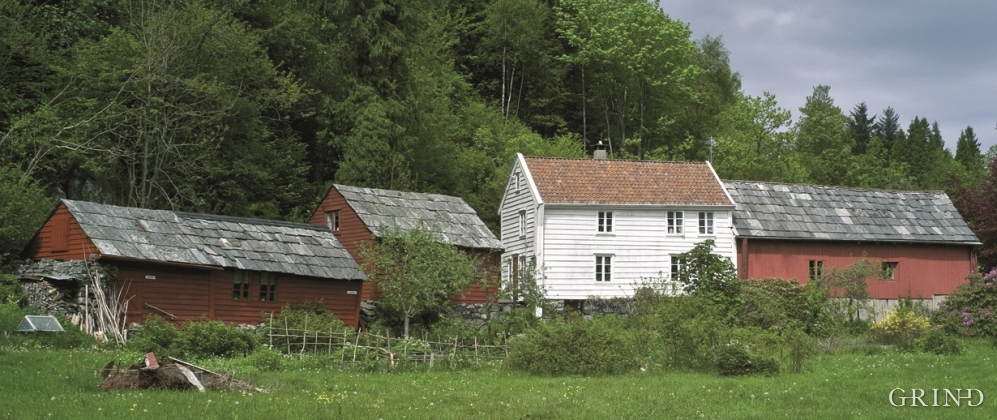Apart from the story about the German the account is close to the truth when it comes to the division of the land in Færavåg. Who built the main house is unknown, but the man who first owned the whole of Færavåg was called Lars Jacobsen (born around 1580), son of a man of lesser nobility Jacob Slee in Uggdal.
The descendants of Lars Færavåg owned all the four parts of the farm right up to around 1810. A man from Kvam then bought one of the holdings. He must have bought out the co-owners of the large main house in Færavåg, moved it around 100 metres to the southeast from the old setting, where it now stands, and shortened it somewhat. Attached to the main house on the north side a hayshed was erected. The row of farmhouses in Færavåg thus obtained its form in the early 1800s, but no doubt it represents an older building tradition. On the farm there is also a smaller dwelling, built in conjunction with a scullery (eldhus) and an extension and a store building




